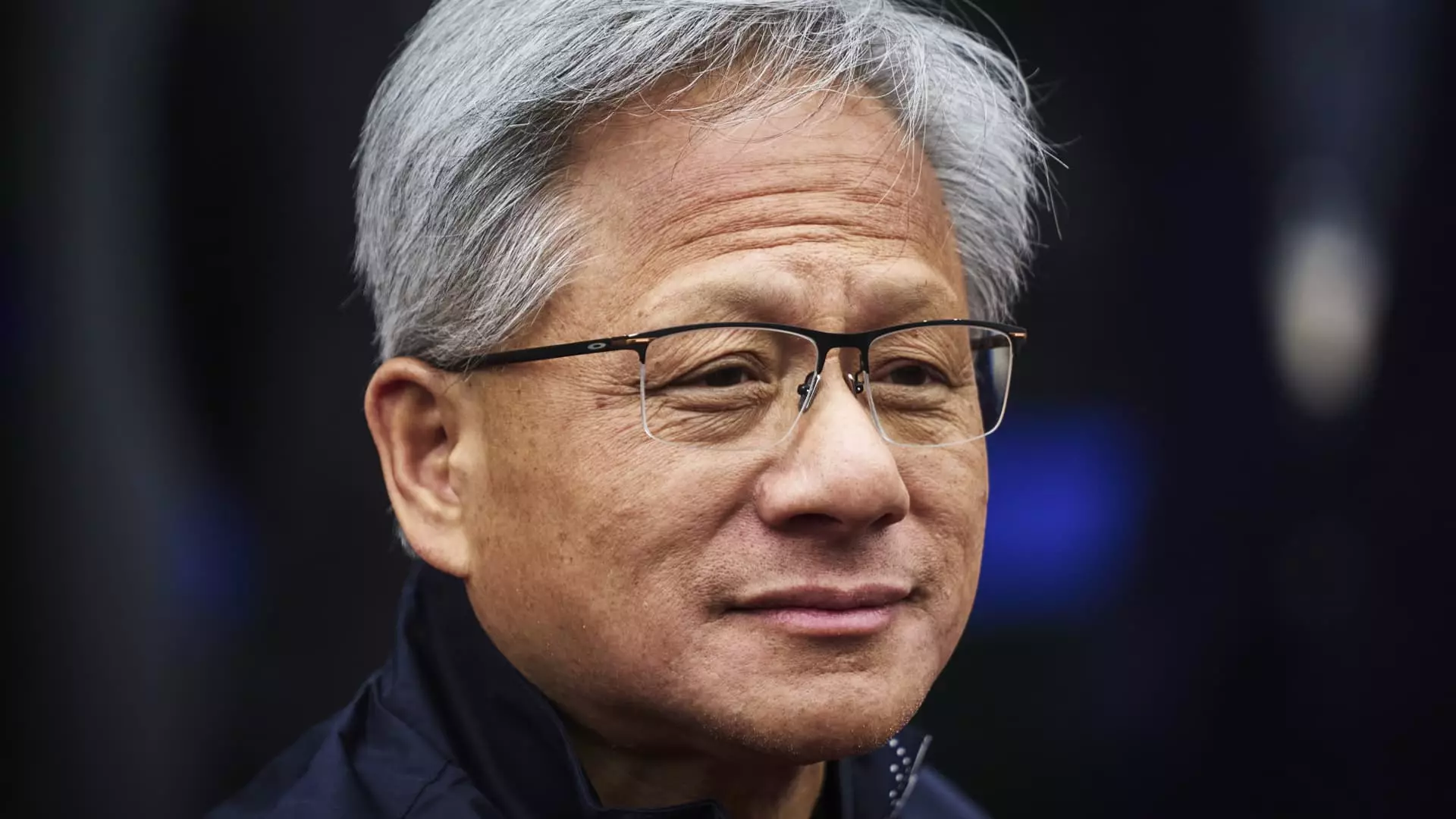Nvidia, a prominent player in the technology sector, is set to unveil its fourth-quarter financial results shortly, which may well encapsulate one of the most extraordinary years seen in large-scale corporate history. The anticipation surrounding this announcement is palpable, with analysts forecasting sales reaching $38 billion for the quarter ending in January. This figure represents a staggering 72% increase year-over-year and signals the conclusion of a remarkable fiscal period in which Nvidia has successfully doubled its sales for the second consecutive year. Such growth primarily stems from the company’s data center GPUs, which have become essential components for developing and deploying cutting-edge artificial intelligence (AI) solutions, including applications like OpenAI’s ChatGPT.
Over the past two years, Nvidia’s stock has soared a remarkable 478%, at times positioning the company as the most valuable corporation in the U.S., with a market cap exceeding $3 trillion. However, despite these accomplishments, investor sentiment has shown signs of wariness in recent months. Nvidia’s stock price has stagnated, reverting to levels seen in October 2022. Investors are now rightfully concerned about the potential for a slowdown in spending from Nvidia’s primary clientele, namely the large-scale cloud service providers often referred to as “hyperscalers.”
One particularly alarming report from TD Cowen has suggested that Microsoft, a major customer for Nvidia products, is notably adjusting its infrastructure investments. The report indicated that Microsoft had canceled leases with private data centers and is re-evaluating its capital expenditures regarding international data centers. Such developments could pose a threat to Nvidia’s sales projections and, consequently, its stock performance, as it has been estimated that a single customer may account for an overwhelming percentage of Nvidia’s revenue.
The intertwined nature of Nvidia’s business model highlights the significant dependence on a handful of mega-clients. Recent analyses show that Microsoft is projected to account for nearly 35% of expenditures on Nvidia’s latest AI chip, Blackwell, with Google and others closely following. Such concentration means that any hint of reduced spending from these giants can trigger volatility in Nvidia’s stock price. However, Microsoft has countered these concerns by reiterating its commitment to investing $80 billion in infrastructure for 2025, emphasizing a strategic pacing approach rather than a full-scale reduction in spending.
Despite these reassurances from Microsoft, other companies like Alphabet and Amazon are still gearing up for significant capex, with reported figures reaching $75 billion and $100 billion respectively. A considerable portion of these expenditures is likely to flow to Nvidia, as the company maintains a stronghold on the market for high-performance AI chips. Nevertheless, the competitive landscape is changing, with hyperscalers beginning to diversify their portfolios to include offerings from rival firms like AMD or developing proprietary AI chips. Nvidia’s dominance in cutting-edge AI technology remains strong, but this competitive landscape creates uncertainty in the long term.
An unsettling development for Nvidia was the announcement of the Chinese startup DeepSeek, which introduced an innovative AI model capable of performing efficiently enough to question the necessity of Nvidia’s GPUs for certain AI tasks. The release caused a notable dip in Nvidia’s market cap, as concerns mounted over a potential oversupply of GPUs in the market. To regain investor confidence, CEO Jensen Huang will need to address these competitive threats in the upcoming earnings call, explaining the continued necessity for GPU resources in the development and deployment of AI technologies.
Huang has pointed to the “scaling law” observed by OpenAI, which posits that more data and computational power result in enhanced AI model performance. He has also introduced the concept of “Test Time Scaling,” which suggests that while training AI models occurs infrequently, their deployment requires vast computational resources. This idea highlights that, despite advancements in AI efficiency, the need for GPUs remains pronounced, specifically during the inference phase where AI models generate vast amounts of output based on user interactions.
As Nvidia approaches this pivotal moment, the juxtaposition of excitement and caution suggests complexities that extend beyond mere quarterly results. The company finds itself at the intersection of tremendous opportunity and growing competition. While the growth figures for sales are impressive, Nvidia must show that it can continue to fulfill the evolving needs of its customers, even amidst a shifting landscape. As AI continues to generate vast interest and investment, one thing is certain: Nvidia’s path forward will demand innovation, adaptability, and strategic foresight to maintain its leadership position in a rapidly transforming industry.

